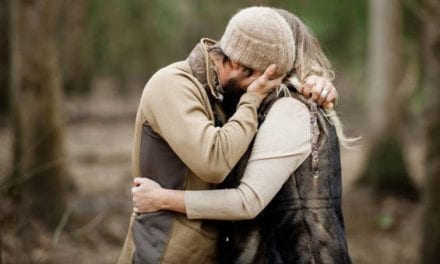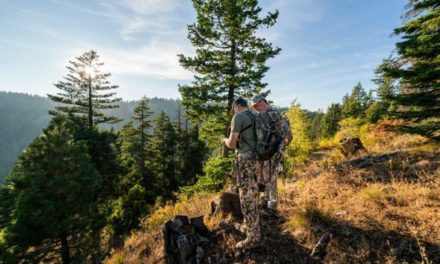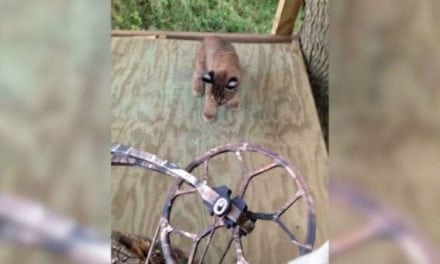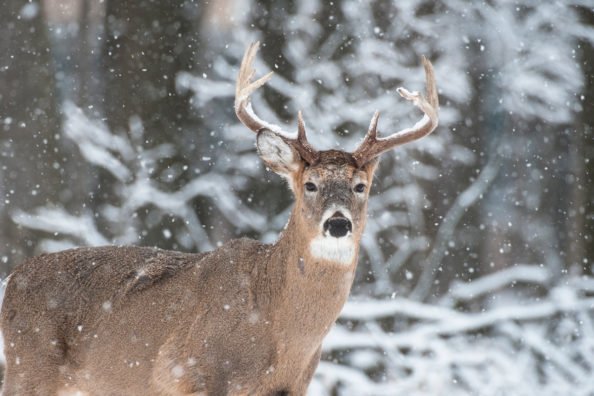
Late season deer hunting can be rough.
Deer hunters either love or loathe the late season depending on who you talk to about it. Some hunters hate the cold weather and the stress of hunting deer trying to get a last-minute buck. Others love the simplified hunting strategies and lessened hunting pressure of this time of year.
Whatever side of the fence you fall on, late season whitetail hunting often offers the last chance to fill your tags and avoid eating tag soup for the season. While it can be frustrating to be at this point in the season with nothing to show for it, sometimes it’s the best time to harvest mature bucks.
These hunting tips will help you get past the cold temperatures and make the most of the little time you have left in the season to put a big buck in the freezer before time runs out.
Dress for success.
Before we get into hunting strategies, we need to talk gear. Because you cannot get a late-season buck if you are shivering in the tree stand and give up early. Making yourself comfortable for the more extreme weather conditions goes a long way towards helping to put venison in the freezer at the last minute. Consider investing in some warm clothing that uses down, fleece, or wool insulation.
If you are hunting in a northern climate with lots of snow, consider down or wool. Fleece can lose some warming qualities if it gets wet. Some of this clothing is rather expensive, but trust us, it’s worth it when it’s the last day, the whitetail deer are moving, but the temperatures have shifted into the single digits. Arguably, merino wool is the warmest of the bunch, and has some odor-absorbing scent control properties that can help significantly with those late gun season and muzzleloader hunts. Especially during those early morning hunts when things seem to be at their coldest.
Don’t rely on the second rut.
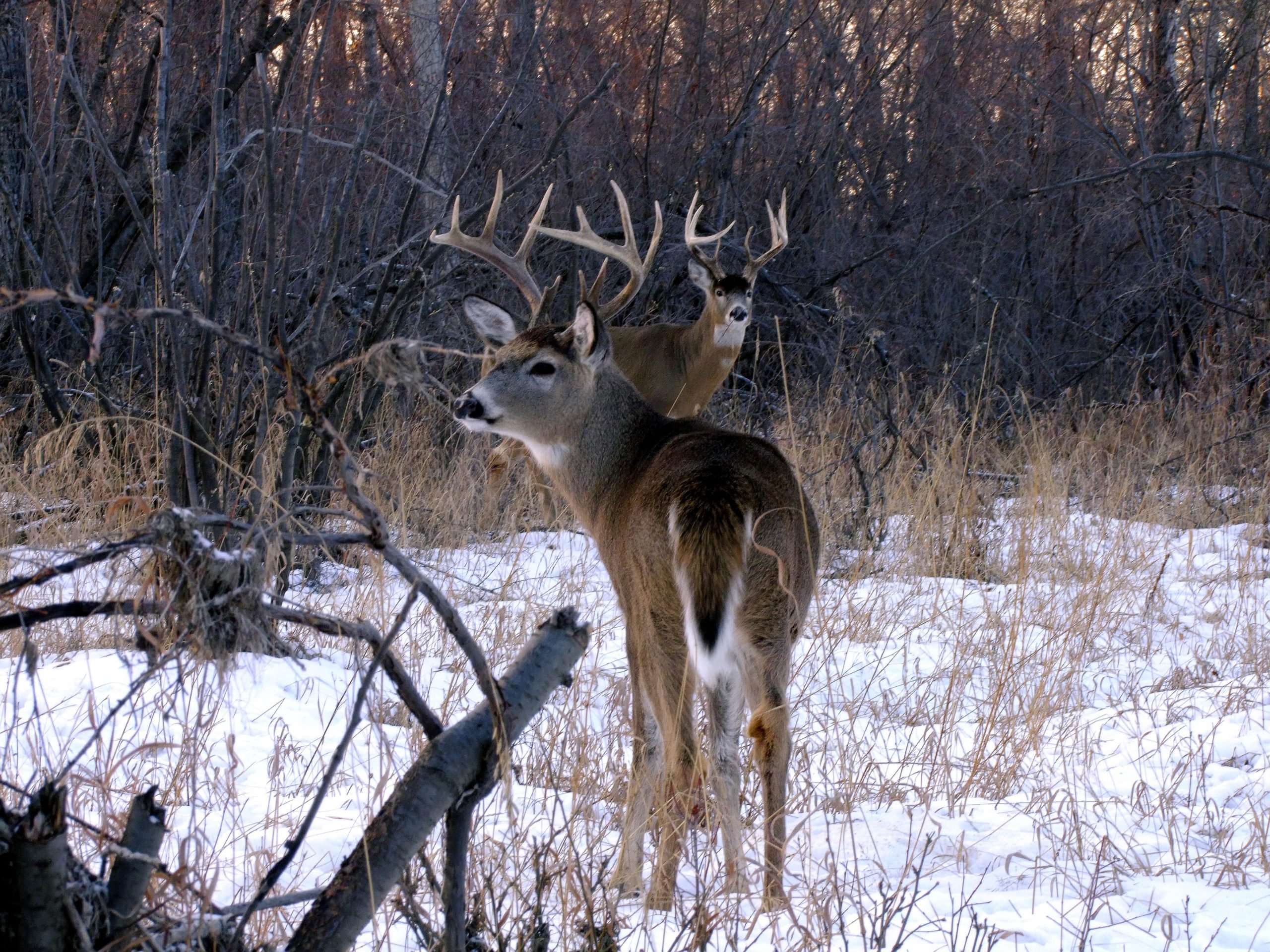
There’s a lot of debate with hunters about the legendary second rut. The time when unbred does and fawns come into estrus. While this kind of rut activity does happen in December, you shouldn’t make it the central part of your strategy like you would rut hunting in November. That is, unless you can specifically pinpoint bucks that are still seeking and chasing. Because some areas may not have a second rut and if you’re calling and running rutting scents and the deer are done, you may do more harm than good.
Closely monitor your trail cameras this time of year to determine if the deer are fully in the post rut phase or not before you go clashing antlers together for a late rattling sequence. Because at this point, some bucks may be fully rutted out and are only listening to their stomachs. In that case, it makes more sense to focus on the late season food sources instead. The second rut is one of those things where it’s great if you can take advantage of it, but it shouldn’t be your central late season strategy without doing your homework first.
Watch the weather conditions.
Most of the experts agree, when it comes to the late season, the weather plays a bigger factor than other times of the year. Especially in pressured areas like public land. In most northern climates, a good cold front will get the deer moving every time. As will a drop in barometric pressure. Hints of rain or snow can spur the deer to get up and get feeding. However, windy conditions may convince the deer to hold tight to their bedding areas.
If you are hunting in the south where things are warmer, a sudden cold snap can sometimes have the opposite effect and cause deer movement to come to a standstill. It depends how severe the cold front is, and how unusual the precipitation you are getting is. If you are in an area that traditionally does not get snow, the deer are likely be confused if it suddenly starts falling. Northern deer usually see a fresh snow as a signal to hit those remaining acorns and other food sources before they’re covered beneath a blanket of white stuff.
Focus on the food.
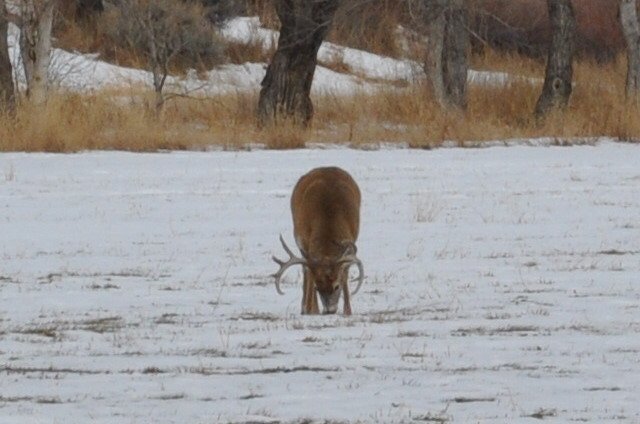
Once the rut is over, many bucks are worn down from having burned through their fat reserves with a full month of chasing and breeding. Their stomach is going to be grumbling and they’ll be looking to fatten up as much as possible before the severe weather hits. Late season is the time to focus on feeding areas heavily. Your food plots will likely see way more action than they did in the early season. Especially if you’ve planted something like brassicas in the offseason. The deer herd will usually hit these sources hard once December rolls around.
If you live in an agricultural area, now is the time to take stock of what crops are left. Did the farmers leave a strip of standing corn? It’s likely to concentrate deer. As are fields of soybeans or other crops. The simplicity of the late season is one of the things we love about it. No more trying to put the puzzle pieces together on a big buck’s unpredictable movements. Just setup on the remaining crop fields, whether they be bean fields or cornfields for the best odds of seeing something.
Extend your range on spooky deer.
Unless you are looking for a serious archery challenge, or bowhunting is the only option left, you should probably take advantage of the increased range afforded by a muzzleloader or regular firearm if there is still season left. Because the deer that survive until December have been through a lot by this point. They’ve endured the stress of the rut AND the peak of hunting season. They are going to be a little on edge.
We really like using a ground blind in the late season and brushing it up more than we might at other times of the year. Just because the deer are going to be a little more jumpy than normal. Especially if you live in a pressured state like Michigan or Iowa. If you can set up for a 100-yard shot, your odds are probably going to be slightly better.
Because when you’re hunting food sources, sometimes a lot of deer will pile into the field. The more deer there are, the more likely you are to be noticed by one. Once one spooks, the hunt is over. Keep your distance and you can help ensure better odds of finally filling that last tag.
Products featured on Wide Open Spaces are independently selected by our editors. However, when you buy something through our links, we may earn a commission.
For more outdoor content from Travis Smola, be sure to follow him on Twitter and check out his Geocaching and Outdoors with Travis YouTube channels.
NEXT: THE AXIS DEER AND HOW THEY’RE IMPACTING PARTS OF THE UNITED STATES
WATCH
The post 5 Late Season Deer Hunting Tips to Save Your Season at the Last Minute appeared first on Wide Open Spaces.












